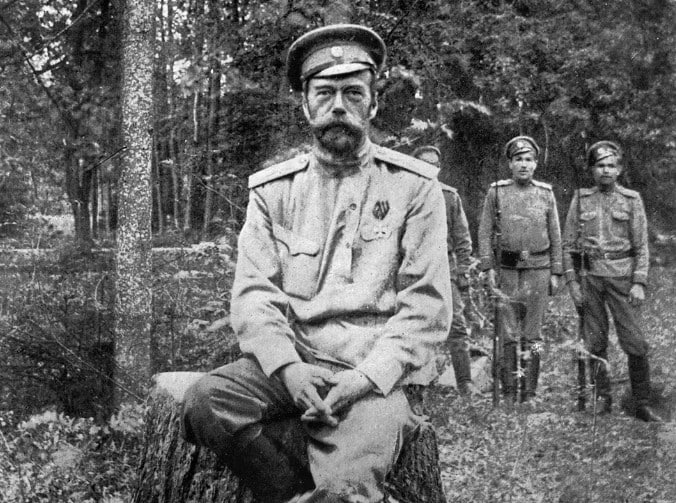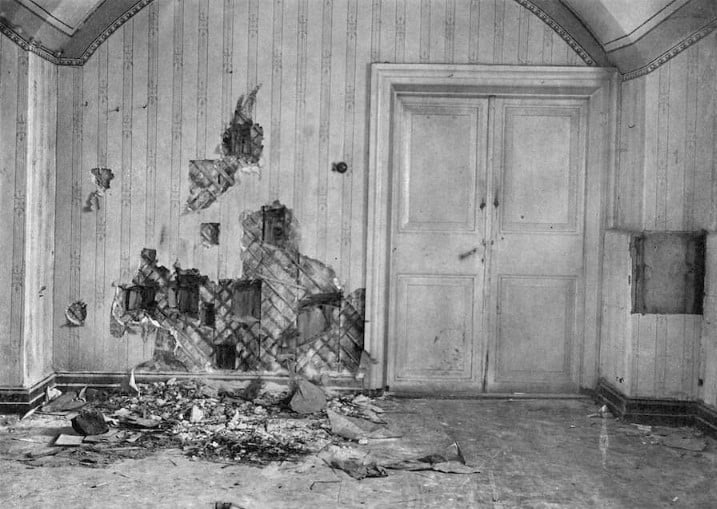Dive Into History: The Shocking Story Behind The Romanov Family’s Execution
In July 1918, amid the turmoil of the Russian Revolution, Czar Nicholas II and his family were brutally executed by the Bolsheviks. The horrific execution changed Russian history forever.
The Romanov dynasty, which had ruled for 300 years and experienced both great achievements and monumental failures, came to a sudden and violent end.
Historians have pieced together the exact reasons behind the assassination of the Romanov family and the broader context that led to their tragic downfall.
What led to the decline of Nicholas II
Russians became discontent with Nicholas II after a series of unpopular decisions

The seeds of the Romanov family’s tragic end were planted early in Nicholas II’s reign. As the eldest son of Emperor Alexander III, Nicholas was the designated heir to the throne.
However, his father, a strict autocrat who believed in ruling with an iron fist, did not adequately prepare him for the challenges of leading a politically turbulent Russia.
When Nicholas Romanov was crowned czar of Russia in 1894, he appeared overwhelmed by the immense responsibilities of ruling such a vast and troubled empire.
“What is going to happen to me…to all Russia?” he asked an advisor when he assumed the throne. “I am not prepared to be Czar. I never even wanted to become one.”
Just days after his coronation in 1896, a tragic stampede in Moscow resulted in the deaths of nearly 1,400 people who had gathered to receive gifts and souvenirs.
This tragic event marked a grim start to Nicholas II’s reign and earned him the nickname “Nicholas the Bloody” due to his poor handling of the disaster.
Throughout his reign, Nicholas faced growing discontent. He waged an unpopular war, oversaw the massacre of nearly 100 unarmed protesters in 1905, and struggled to cooperate with the Duma, Russia’s representative government.
Nicholas II’s lack of desire to govern led to a series of poor decisions, including his involvement in the Russo-Japanese War from 1904 to 1905, which ended in a humiliating defeat for Russia.
Nicholas II lost public support as a result of the disasters in World War I

In 1914, Russia entered World War I, ill-prepared for the immense conflict ahead. The staggering casualties horrified the Russian people, with the country suffering over 1.8 million military and 1.5 million civilian deaths, the highest toll of any nation involved.
The war severely undermined Nicholas’ grip on power. With so many men gone, the agricultural system collapsed, leading to food shortages. The transportation system also failed, causing widespread rioting. Initially, Nicholas refused to abdicate, but by March 1917, he stepped down.
The rise of Bolsheviks

Nicholas’ abdication didn’t calm the unrest and attempts to establish a provisional government proved ineffective. Meanwhile, the Bolsheviks gained popularity in Russia following the February Revolution.
Led by Vladimir Lenin, the Bolsheviks were a wing of the Russian Social-Democratic Workers’ Party inspired by Karl Marx and Friedrich Engels, aiming to revolutionize Russia.
By the October Revolution of 1917, they seized control of the country. While some supported the new government, others resisted, sparking further turmoil and eventually leading to civil war.
Seeking asylum, Nicholas approached the British and French governments – after all, his wife was the granddaughter of Queen Victoria. But both countries refused to grant refuge, leaving the Romanovs at the mercy of the newly established revolutionary regime.
The imprisonment of the imperial family

In 1917, the Bolsheviks placed Nicholas II and his family under house arrest in a heavily fortified mansion in Ekaterinburg, located in the Ural Mountains.
At about 1 a.m. on July 17, 1918, Nicholas II, Tsarina Alexandra, their five children, and four remaining servants, including the loyal family doctor, Eugene Botkin—were roused from their sleep by Bolshevik guards. They were urged to gather their belongings for an departure.

Gathered in the mansion’s cellar, the family stood together, almost as if posing for a family portrait. Alexandra, feeling unwell, requested a chair, while Nicholas asked for another for his son, 13-year-old Alexei.
The Romanovs held onto hope until the end, unaware of their impending brutal execution. Meanwhile, the Bolsheviks feared anti-Bolshevik forces seeking to free the family, as they aimed to prevent any chance of the imperial family’s restoration to power.
The family’s Bolshevik captors moved the Romanovs to their final destination, where they called “House of Special Purpose.”
What exactly happened in execution

At the final moment, the Romanov family was abruptly informed about their impending execution. Yakov Yurovsky and his armed men burst in and informed Nicholas II that he had been sentenced to death.
The czar, caught off guard, reportedly reacted with disbelief, “What? What?”, but there was no escape as gunfire erupted. The Bolsheviks unleashed a barrage of bullets not only on Nicholas II but also on his terrified family and servants.
To the horror of the Bolsheviks, not all victims succumbed immediately to the gunfire. The armed men soon turned to bayonets, knives, the butts of their guns to brutally kill off the children. It took about 20 minutes for all of them to die.
The youngest of the Romanov children, 13-year-old Alexei, endured particularly harrowing suffering.
According to Russia Beyond, young Alexei also suffered from hemophilia, a bleeding disorder, throughout his short life, so his death may have been especially excruciating.
The aftermath of the Romanov Family’s execution

The aftermath of the Romanov family’s execution was chaotic, but the burials were even more frenzied. Yurovsky and his comrades stripped the bodies of clothing and jewelry, then covered them in acid in an attempt to conceal their identities.
They initially tried to bury the corpses in a nearby mine but couldn’t dig a deep enough grave. They resorted to abusing the bodies while searching for another hiding spot.
Eventually, they found a new gravesite and decided to bury two of the children separately to confuse anyone who might discover the remains. That’s why they burned the corpses and broke their bones.
After the execution, the Bolsheviks freely admitted to the people of Russia that Nicholas II had been killed.
The party’s newspaper justified the killing by portraying the czar as a symbol of oppression and brutality, labeling him as “the personification of the barbarian landowner, of this ignoramus, dimwit, and bloodthirsty savage.”
For much of the 20th century, the victims’ bodies lay in secret, unmarked graves. In 1979, amateur historians discovered the remains of Nicholas, Alexandra, and three daughters.
After the Soviet Union’s collapse in 1991, the graves were reopened and the identities confirmed through DNA testing. In 1998, Russian president Boris Yeltsin and Romanov relatives attended a ceremony to reburial the remains in St. Petersburg.
In 2007, partial remains of two more children, Alexei and Maria, were found and tested for confirmation. Many expected them to be reburied with the rest of the family.

